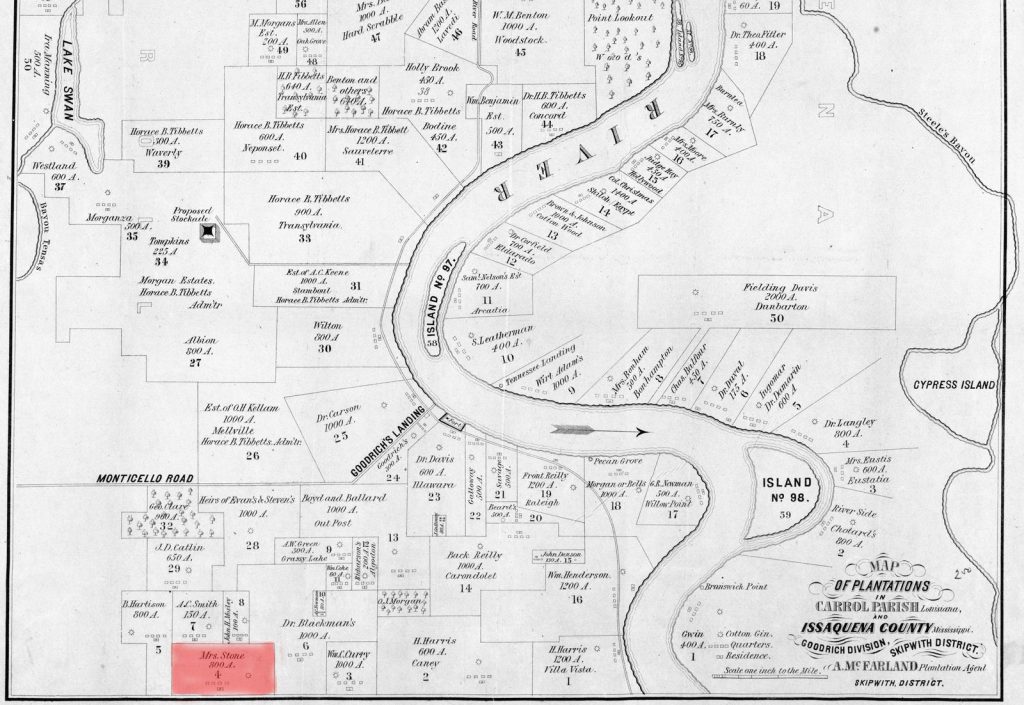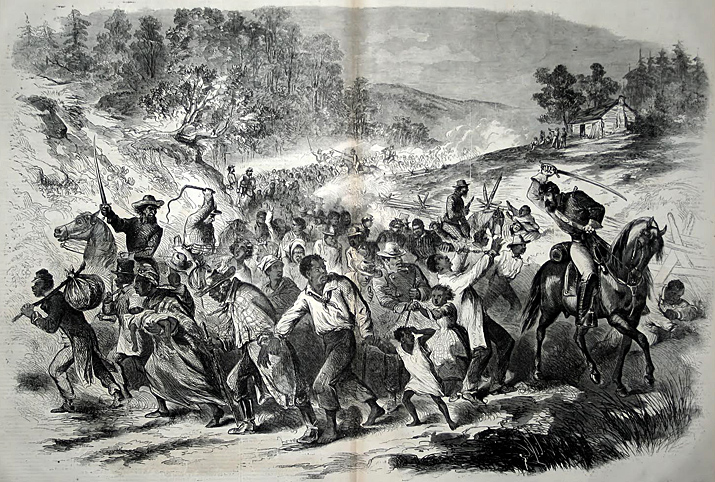Civilians Under Siege: A Confederate Woman’s Diary of the War in the Trans-Mississippi

I first encountered Brokenburn: The Journal of Kate Stone, 1861–1868 in an undergraduate course on the topic of great Civil War writers. Looking at the syllabus at the start of the term, I circled the diary as a text I was not particularly excited about. To me, the story of a woman living far from the war’s Virginia epicenter held little interest. What I quickly discovered, however, is that Kate Stone’s wartime record featured an intensely relatable story of civilians living in a place ravaged by war—as well as being the tale of a young woman who was only twenty years old in 1861, and who was just as concerned with skin blemishes and the latest fashions as she was with news from the front. The diary is an indispensable record of the war in the Trans-Mississippi West as lived by civilians.
Unlike Mary Chesnut, whose voluminous diary remains the standard “women’s diary” of the war, Kate Stone did not spend the war among Confederate brass or Richmond high society. In fact, she spent much of the conflict living as a refugee after the Union assault on Vicksburg forced her family off their northern Louisiana plantation to Tyler, Texas, where Kate resented the locals who lacked, in her judgement, the refinements of Southern society. She also experienced the reality of living in a place occupied by an opposing army and witnessed, firsthand, the pressures that the Civil War placed on the institution of slavery—an institution that provided Kate’s family their wealth and subsistence.

Still, Stone, like her more easterly counterparts, proved herself to be an ardent and unquestioning Confederate partisan. She bore the sacrifice of two brothers to the Confederate cause—and became, after the war, a member of the United Daughters of the Confederacy. Though historians have debated whether Confederate morale and lack of support from women contributed to Confederate defeat (especially in the Western theater), Stone’s diary confirms what scholars such as Gary W. Gallagher and Jacqueline Glass Campbell have argued: the threat of occupation or the advance of Union troops often did the opposite of demoralizing Confederate women, instead galvanizing their support to a measurable degree.[1] When, in 1862, for example, the plantations of northern Louisiana fell under Union control Stone wrote that “though the Yankees may have gained the land, the people are determined they shall not have its wealth.”[2]
Stone’s experiences as a refugee in Texas give her diary added value for understanding how the conflict pushed and pulled individuals across a vast geography as cities were occupied, plantations destroyed, and river controlled by opposing armies. While Stone hated Texas, the Lone Stone State likely presented her family with the only opportunity available to them to maintain control over the enslaved African Americans who worked on their Louisiana plantation. One of the most interesting aspects of Stone’s refugee experience in the Trans-Mississippi West the, is the insight it offers into the movement of Black bodies in the wake of the Emancipation Proclamation. Stone’s view, typical of her time, was that her family had every right to force the bodies they owned to move to Texas, where they would continue to be enslaved. Stone even wrote that “the Negroes do not want to kill us” when she played down the prospect of a large-scale insurrection among those slaves brought to Texas from Mississippi and Louisiana.[3]
Stone’s journal, in conversation with other wartime accounts and recent scholarly works, provides perspective on the scale of the journey many Confederate refugees and the enslaved men and women they claimed as property made across the Confederacy. Arthur J. L. Fremantle, famous British traveler who travelled across the South during the Civil War, commented on the movement of slaves from western Louisiana into Texas when he passed through the region in the spring of 1863. “We met several planters on the road, who with their families and negroes were taking refuge in Texas, after having abandoned their plantations in Louisiana,” Fremantle wrote, adding two days later near Monroe, Louisiana, that “the road to-day was alive with negroes, who are being ‘run’ into Texas. … We must have met hundreds of them.”[4] Historians differ on the number of enslaved people forced into Texas by slaveowners such as the Stone family, though the number may be as high as 150,000.[5]

Because Texas lay beyond the reach of Union troops for most of the war, moreover, the enslaved residents of the state had little chance to take advantage of the Emancipation Proclamation, which required occupation by Union armies to take effect. By the end of the conflict, few United States soldiers had set foot in the Lone Star State. The number of United States Colored Troops recruited from Texas is a clear indication of the state’s wartime isolation. The total of 47 (.001 percent of the military-age black male population) for the entire state paled in comparison to the 24,052 (more than 30 percent) from its Union-occupied neighbor Louisiana.[6] Stone’s experience confirms that once her family moved beyond the reach of Union occupiers, she felt that her property and family were secure from any threat—save, she occasionally noted, the Native Americans who still exerted some control over the more sparsely settled region of West Texas.[7]
Though on the surface Kate Stone seems to have experienced a very atypical Civil War, in many ways her diary provides a record of an experience shared by many during the conflict—displacement from home on account of factors beyond their control. Stone kept a diary that records not only a classic case of Confederate nationalism and an unshakable belief in the right of white people to own Black bodies, but also a window into the movement of people and ideas during the conflict. In many ways, it is a story much more typical of the war’s Trans-Mississippi theater than of Virginia or Maryland or Pennsylvania. For those who have not yet given Kate Stone’s Brokenburn a chance, it is a journal more than worth having. I return to it regularly and always come away with new insights about how individuals experienced the Civil War, how they made sense of a massive military conflict, and how no person could have guessed in 1861 where the fight would end.
Sources:
[1] See Gary W. Gallagher, The Confederate War (Cambridge, MA: Harvard University Press, 1997), especially Chapter 1; also, Jacqueline Glass Campbell, When Sherman Marched North from the Sea: Resistance on the Confederate Home Front (Chapel Hill: University of North Caroline Press, 2003), which convincingly proves how William Tecumseh Sherman’s march through Georgia and the Carolinas hardened Confederate women’s resistance to Union occupation.
[2] John Q. Anderson, ed., Brokenburn: The Journal of Kate Stone, 1861–1868 (2012, reprint; Baton Rouge: Louisiana State University Press, 1955), 100.
[3] Anderson, ed., Brokenburn, 298; this comment, from September 1864, pre-figured on of the central tenets of the Lost Cause ideology developed by former Confederates after the war.
[4] Arthur J. Fremantle, Three Months in the Southern States, April–June 1864 (Edinburgh: William Blackwood, 1863), 78–80, 85.
[5] Yael Sternhell, Routes of War: The World of Movement in the Confederate South (Cambridge, Mass.: Harvard University Press, 2012), 99.
[6] Gary W. Gallagher, The Union War (Cambridge, MA: Harvard University Press, 2011), 145.
[7] Anderson, ed., Brokenburn, 298; Stone likely encountered members of the Choctaw Nation.
Thanks for the article; I enjoyed her book.
I also read excerpts from Stone’s diary, as part of a post graduate class I had with Professor Campbell at UConn about 20 years ago. What strikes me is the role experiences like hers caused the next generation of Southern whites to fervently embrace the Lost Cause belief structure. These Southern women had witnessed displacement, physical loss and the movement of armies in their immediate neighborhood. They had to make significant, life changing decisions for themselves and their children, often without the assistance of their spouses. Partisans of Sherman always ignore the long term resilience and anger of those whose resources they “borrowed” in “teaching them a lesson”.
As we all move forward in our understanding of a variety of aspects of “our” war, Brokenburn is one of the books that deserves another look. I enjoy how we all learn, change, grow, and add our collective experience to the accumulated history of America. Thanks for reminding people.
Agreed.
The Trans-Mississippi Theater has largely been ignored by researchers and writers, and this work is a welcome contribution.
Officially adding this to my wish list 🙂
Thanks for reviewing this book! I was aware of it, but never read it. Just ordered a copy!
During the Civil War civilians, particularly in the border regions, endured considerable hardships imposed on them by soldiers misbehaving or engaging in serious criminal conduct. Many civilian homes were looted and/or burned for no strategic or tactical purpose by individuals of both sides of the war. Southwest Missouri is a prime example in which individual homes and businesses were looted and burned, sometimes entire towns were torched. Sarcoxie, Bowers Mill, and Lamar were prime examples. Such conduct inflamed hatreds which endured for generations. Many commanders, North and South, were lax in allowing their troops to engage in wanton criminal behaviors.